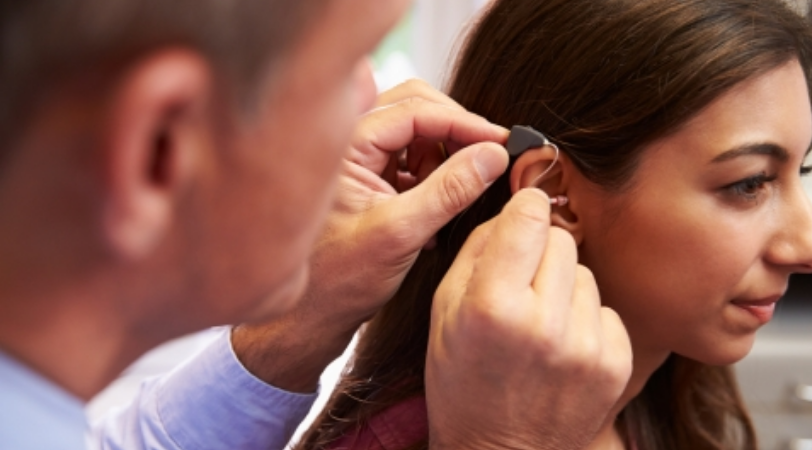The Medical City ENT Center
2/F Podium Bldg.
Contact Numbers
(632) 988-1000 / (632) 988-7000 local 6251
(632) 689-8201 (direct line)
Open daily from 8:00AM to 5:00PM except Sundays and Holidays
All procedures are by appointment only.
PATIENT SERVICES / Service Units
Comprehensive Center for Hearing and Balance
The Center for Hearing and Balance is a premier facility which brings together experienced ENT doctors dedicated to diagnosing and treating hearing and balance disorders.

The Center for Hearing and Balance is equipped with modern facilities for hearing and balance tests both for children and adult patients. The hearing and balance center offers services from newborn hearing screening to amplification (hearing aids and cochlear implant). It is the first private hospital with a Cochlear Implant Program which started in 2014. This program covers early diagnosis, intervention and rehabilitation of children diagnosed with hearing loss.
The hearing center has the latest available technology for the evaluation of hearing and balance, including the complete hearing test battery (Puretone Audiometry, Tympanometry and Speech audiometry), Auditory Brainstem Response (ABR), Auditory Steady State Response (ASSR), Videonystagmography (VNG), Vestibular Evoked Myogenic Potential (VEMP), Electrocochleography (EcochG), and the upcoming Video Head impulse test (VHit).
Diagnostic and Screening Procedures
The Center for Hearing and Balance offers extensive diagnostic and screening procedures to address hearing and balance disorders.
Hearing Screening Procedures
Hearing screening procedures involve quick tests to identify individuals who may have hearing loss, allowing for early detection and intervention.
Pure Tone Audiometry
This crucial hearing test identifies a person's hearing threshold levels, helping to pinpoint the severity, nature, and pattern of their hearing loss.
Speech Audiometry
Used alongside pure-tone audiometry, speech audiometry helps determine the extent and kind of hearing loss and gauges a person's comfort with speech sounds and their ability to recognize words.
Immittance Audiometry
This hearing test process involves tympanometry to assess eardrum movement and middle ear health, acoustic reflex testing to measure eardrum changes in response to loud sounds, and a reflex decay test that monitors these changes over 10 seconds. The results guide the audiologist in determining whether hearing loss is due to problems with the cochlea or acoustic nerve.
Play Audiometry
Play Audiometry is a child-friendly hearing test method conducted at the hearing center, transforming basic hearing tests into games for toddlers and preschoolers. It assesses their ability to recognize different sound intensities and pitches.
Otoacoustic Emissions Screening (OAE)/ Newborn Hearing Screening Test
The Otoacoustic Emissions Screening (OAE) is a newborn hearing test that measures sound from the inner ear to detect potential hearing loss, playing a critical role in early auditory health assessment.
Auditory Brainstem Response (ABR)
Auditory Brainstem Response (ABR) is a neurologic test of auditory nerve function. It measures electrical activity in the brain in response to sound, helping diagnose hearing loss and neurological disorders.
Auditory Steady State Response (ASSR)
The Auditory Steady State Response (ASSR) is an objective hearing test that evaluates neural responses to auditory stimuli, providing frequency-specific information about hearing sensitivity.
Electrocochleography (ECochG)
Electrocochleography (ECochG) captures electrical potentials from the cochlea and auditory nerve, providing valuable information for diagnosing disorders such as Meniere's disease
Balance Screening Procedures
Balance screening involves a series of tests done at the hearing and balance center to assess balance and stability, helping identify risks for falls, especially in older adults or individuals with mobility issues.
Video Head Impulse Test (vHIT)
The Video Head Impulse Test (vHIT) is a quantitative evaluation of the vestibular ocular reflex, assessing the function of each semicircular canal in the inner ear.
Videonystagmography (VNG)
Videonystagmography (VNG) is a non-invasive diagnostic test used to evaluate the function of the inner ear and central motor functions, used in diagnosing dizziness and balance disorders.
Vestibular Evoked Myogenic Potential (VEMP)
Vestibular Evoked Myogenic Potential (VEMP) is a test that evaluates the function of specific vestibular pathways, playing a crucial role in diagnosing diseases of the ear and vestibular system.
Epley Maneuver
The Epley Maneuver is a non-invasive exercise used to treat benign paroxysmal positional vertigo (BPPV). It involves specific head movements to alleviate symptoms by repositioning displaced inner ear crystals.
Total Hearing Care Solution
Total Hearing Care Solutions offered by the Center of Hearing and Balance provide comprehensive audiological services, from newborn hearing screenings to advanced treatments like hearing aids and cochlear implants, improving auditory health for all.
Total Hearing Care Solution (Pedia and Adult)
Total Hearing Care Solution (Pedia and Adult) is a comprehensive program under the hearing and balance center that provides audiological services, such as newborn screenings, diagnostic tests, and amplification, which aim to enhance auditory health across all ages.
Hearing Aid
The Medical City's Hearing Aid service provides comprehensive care for individuals with hearing impairment, offering a wide range of hearing aids and personalized solutions for improved auditory health.
Cochlear Implant Program
The Cochlear Implant Program is the first in the country and offers comprehensive audiological care, providing cochlear implant evaluation, treatment, and follow-up to restore useful hearing and improve communication abilities for individuals with significant hearing loss.
Hearing Conservation Program
The Medical City's Hearing Conservation Program focuses on early detection, intervention, and rehabilitation of hearing loss in children. The hearing center utilizes only the latest technology for comprehensive auditory care when conducting its services.
Tinnitus Management Program
The Tinnitus Management Program provides comprehensive care for tinnitus sufferers, offering expert evaluation, guidance, and management strategies to alleviate the distress caused by this condition.